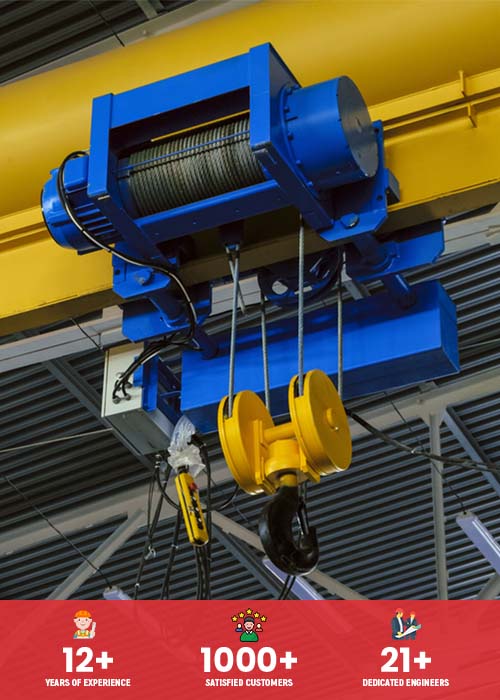Types of EOT Cranes and their Features
Cranes are among the most common pieces of machinery found in both large and small businesses. The crane’s main aim is to make physical tasks easier by lifting huge weights with the help of mechanical arms. A crane operator is assigned the task of driving and operating the crane, as he is an expert in crane operations. Cranes are almost always present on building sites since they are incredibly useful and effective in easing the labor. An EOT crane manufacturer makes cranes in a variety of dimensions, and each one is employed to meet the needs of a certain industry.
Single Girder EOT cranes:
Material handling applications led to the invention of single-girder EOT (Electric Overhead Traveling) cranes as industrial lifting apparatus. The lifting, lowering, and horizontal movement of loads is made possible by the single horizontal beam that single-girder EOT cranes use to support a boom and trolley system.
Features:
- When it comes to installation, single-girder cranes are easier to use and lighter than double-girder cranes.
- equipped to facilitate a variety of operations by managing a broad range of capacities and lifting heights.
- Its design is straightforward, and it requires little upkeep.
- Economical
- It may move in a flexible manner.
- After that, it can move along the trolley’s whole length.
- The largest coverage area is offered by it.
- It is also appropriate for outdoor and indoor applications.
- Crane building materials and protective coatings are key factors.

Double Girder EOT cranes:
Two-girder Electric Overhead Traveling cranes are another name for EOT cranes. This kind of crane is typically utilized as a heavy-lifting apparatus in industrial environments. Double girder cranes have a boom and trolley system situated between two horizontal steel girders that are supported by a runway beam.
Features:
- Because of its two-girder structure, it has a robust and well-designed appearance.
- The load-bearing capability of a twin girder is its finest characteristic.
- Its electric functioning is efficient and seamless.
- Beyond guaranteeing exact control and cutting down on energy usage.
- The maintenance of double girder cranes is quite simple and easy
- Double girders can be arranged in different ways to accommodate different needs.
- It offers the largest coverage area
- Finally, it can adapt to a variety of work situations.
JIB Cranes
Industrial machinery like JIB cranes is made to lift and move big objects in a certain workspace. A gantry or bridge framework, a boom or trolley, and a flexible boom or jib to cover different sections make up a JIB crane.
Features:
- JIB cranes offer flexibility and accurate placement during lifting operations.
- It has a smooth and controlled motion
- JIB cranes can lift and carry large weights with exceptional efficiency.
- Integrating security to reduce risks and guarantee operator and site safety is its primary feature.
- Requires very less maintenance
- Lastly, parts are conveniently located for effective maintenance.
Industrial Cranes
Heavy-lifting equipment utilized in a variety of industries, particularly manufacturing, shipping, and construction, is called an industrial crane. The original purpose of these industrial cranes was to handle and transfer bulky goods, machinery, and materials.
Features:
- It is capable of lifting. (Because these cranes can manage enormous weights, they are appropriate for transferring big machines and goods.)
- Expandable booms and elevated structures facilitate the lifting and moving of things across longer distances.
- Industrial Cranes are readily portable.
- These cranes are able to adjust to various work settings.
- It contains an action button, an emergency stop control, and a load limit indicator which are also its advanced features.
- With various boom configurations, attachments, and remote control options, this EOT crane may be tailored to meet unique requirements.





